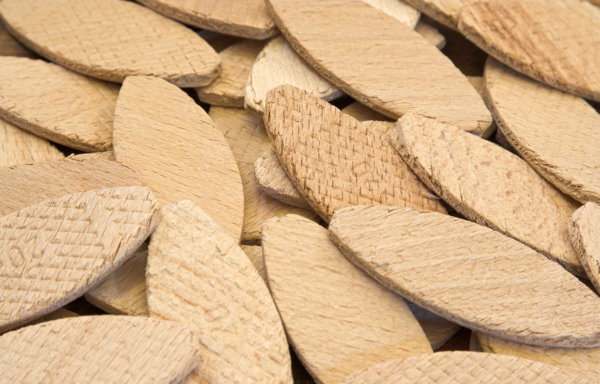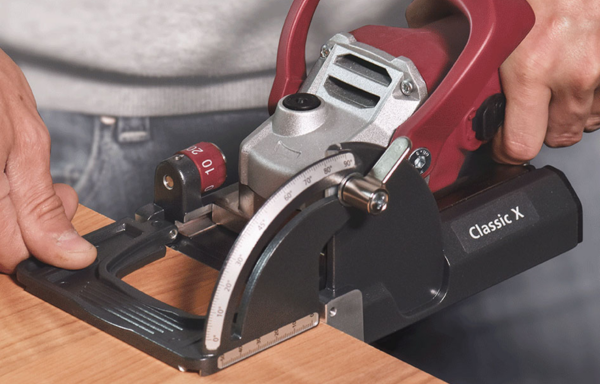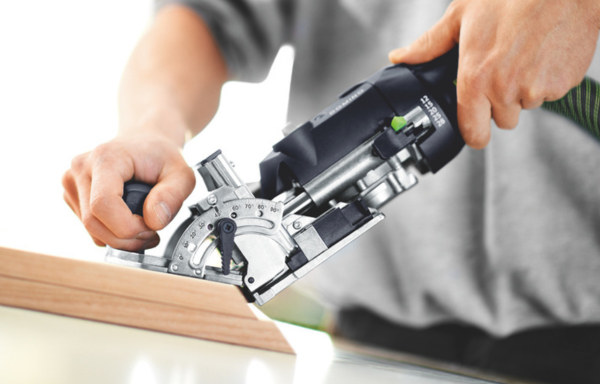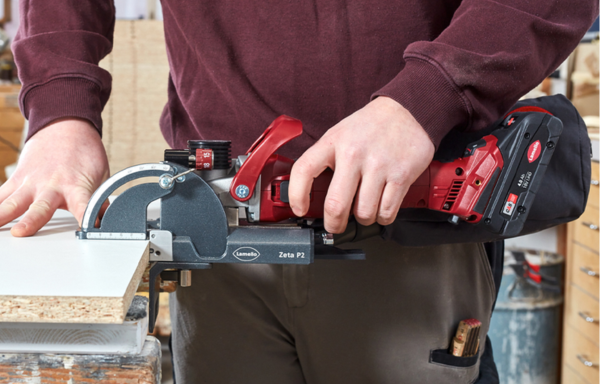Joinery Showdown: Lamello Zeta vs. Biscuit Jointer vs. Festool Domino

When it comes to precision woodworking, how you join your pieces can make or break a project. While screws and nails are a toolkit essential, for every professional and DIY enthusiast, there are three standout tools for flawless joinery: the classic Biscuit Jointer, the high-tech Festool Domino, and the incredibly sophisticated Lamello Zeta P2.
In this article, ‘Joinery Showdown: Lamello Zeta vs. Biscuit Jointer vs. Festool Domino’, we will explore the different types of power tools used in joinery and unpack what makes each one unique and when to reach for which.
The Biscuit Jointer: A Woodworking Staple

A biscuit jointer, or biscuit joiner, is a woodworking tool used to join two pieces of wood or board materials edge-to-edge, or at angles.
How does a Biscuit Jointer work?
It works by cutting a small, crescent-shaped slot into each workpiece. Into these slots, you insert a thin, oval-shaped piece of compressed wood called a biscuit, which is then glued in place. As the glue sets, the biscuit swells slightly, locking the two boards together and helping align them perfectly.
Best for:
- Aligning panels or carcasses
- Edge-joining boards
- Cabinet and furniture assembly
- Quick assembly with modest strength
- Entry-level woodworking or budget-conscious projects
Pros:
- Easy to learn and use
- Affordable and widely available
- Great for alignment during glue-ups
- Versatility to handle a wide range of tasks, including plywood and MDF
- Clean, invisible joints, no screws or nails needed
Cons:
- Limited joint strength
- Not as versatile as Dominos or dowels when it comes to complex angles or tight spaces
Festool Domino: Precision Powerhouse
The Festool Domino is a premium woodworking tool designed to create strong, precise mortise-and-tenon joints, but with the speed and ease of a biscuit jointer.
How does a Festool Domino work?
The Domino uses a rotating and oscillating cutter to plunge into the wood and create a precise mortise or rectangular domino-shaped slot. Unlike a drill that just spins, the Domino’s cutter also moves side to side, mimicking the shape of a traditional mortise. Think of it as a mini mortiser with laser-like accuracy.
Best for:
- High-end cabinetry and furniture
- Chairs, tables, doors—anything structural
- Projects needing repeatable joints
Pros:
- Extremely strong joints
- Excellent for compound angles and repeatability
- Timesaving for complex builds
Cons:
-
- Slight learning curve
- Joint sizes are restricted by Domino tenon sizes
Lamello Zeta P2: The Secret Woodworking Weapon
The Lamello Zeta P2 is a clever evolution of the biscuit jointer, designed specifically for use with Lamello’s P-System connectors – like Clamex, Tenso, and Divario. What sets it apart is its ability to cut not just a standard slot, but a T-shaped undercut that locks in mechanical connectors for fast, precise, and even removable joinery.
How does the Lamello Zeta P2 work?
Like a traditional biscuit joiner, the Zeta P2 plunges into the wood to cut a slot. At full depth, a mechanical drive kicks in, causing the cutter to oscillate vertically. This creates the T-shaped undercut – the signature of the P-System.
You then insert a connector, like a Clamex P-14, into the slot. These connectors lock into the undercut and can be tightened with a hex key – no glue or clamps are required with a Clamex connector.
Best for:
- Knock-down furniture and flat-pack assembly
- High-end interiors and shopfitting
- Projects requiring tool-free demountability
Pros:
- Totally invisible joints
- Fast, clean assembly with no clamps
- Reusable and modular design
Cons:
-
- Proprietary system – less flexibility
- Premium tool, so it may have a higher initial cost
So, Which One Should I Use?
It’s all about choosing the right partner for the job:
- Pick the biscuit jointer for easy alignment and quick, budget builds. Great for beginners working on light-duty furniture.
- Go Festool Domino for professional-grade strength and precision. Extremely strong joints, fast mortising, great for angles and repeatability.
- Reach for the Lamello Zeta P2, when you need a flawless finish, or if you’re doing high-end cabinetry, shopfitting, or modular furniture that needs to be assembled and/or disassembled cleanly.
Each has its own niche, which is why Protrade stocks all options, along with the consumable biscuits, dominos, and connectors.
- What can you do with a biscuit joiner?
A biscuit joiner is used to join two pieces of wood or board materials edge-to-edge, or at angles.
- What are the advantages of a biscuit joint?
A biscuit joint perfectly aligns panels or carcasses together during assembly, adding shear strength to the final joint.
- What is the minimum wood thickness for a biscuit joiner?
The minimum material thickness for edge cuts is 6mm, and the minimum material thickness for surface cuts is 13mm.
- How to use a biscuit joiner 45 degrees?
Adjust the fence to align with the 45-degree angle on the wood piece, measure and mark the spots for the biscuit slots on both pieces, then cut the slots. Tip: Hold the wood as you do this to prevent shifting. Finally, apply glue and insert the biscuits into each slot, press the two pieces of wood together, and secure with clamps until the adhesive has dried.
- How strong are biscuit joints?
Biscuit joints are strong enough for many applications, particularly when used in conjunction with wood adhesive, but for a stronger joint, use a domino or a Lamello P-System connector.
- Where can I get my biscuit jointer repaired?
Protrade is an authorised service and repair centre for many biscuit jointer brands, including Lamello, Makita, Wurth, and DeWalt – plus Mafell and Festool dowel jointers and domino machines.

Joint Managing Director, Protrade
Craig has over 30 years of experience at Protrade, working in various departments including sales, procurement, and marketing, and ultimately becoming Managing Director in 2008. Following the merger of Protrade and Joinery Fit-Out Supplies in 2018, Craig is now the joint MD of the company.








